All the Secret Details in the Hairstyles on The Crown Season 3
There are so many levels on which you can enjoy the latest season of The Crown. There are the historical elements, which can lead you down an internet deep dive about events like the tragedy at Aberfan or Prince Charles’s investiture as the Prince of Wales. Then, you've got the soap opera elements about the messy, dramatic, and dysfunctional drama going on behind palace walls, what with possible coups, love quadrangles, and royal marriages falling apart. But one of my favorite aspects of the show will forever be the hair, makeup, and styling.
We got to chat with Cate Hall, the show’s hair and makeup designer, about what went into the incredible hairstyles of Queen Elizabeth, Princess Margaret, Princess Anne, Camilla Shand, and even Prince Philip and Prince Charles. Currently in production on season four (when we will finally meet Diana), she spilled all of her on-set styling secrets and the incredible amount of research and meticulous detail that goes into recreating the looks of some of the most famous people in the world.
“I spent months doing picture and video archive research to build a library of chronological reference books to include our principal royals and also our extensive supporting cast of recognizable faces,” she says. “Using these ‘bibles’ of images, one for each royal and one for each block of episodes, I was able to track how their looks evolved over the 13 years covered in season three and start to make a plan for how we might represent these changes on screen. I wondered if going to the bother of having photo books printed was a waste of time but was so gratified to see the whole team and also the cast checking back in and referencing them throughout the shoot.”
It sounds like a totally fascinating process. “Of course, we pay attention to the finer details, and they inform our wider choices, but where typically we start by giving the actor everything we can that might work, for example teeth or plumpers (an appliance set inside the mouth to change the shape of their face), we nearly always then gradually strip these layers away until we reach a point that is believable and real,” Hall explains. "We actually deliberately avoid too literal a representation of the character, since being too verbatim also rings false. Because we are dealing with human beings, not mannequins, we have to make choices that sit and move naturally with the actor. Every choice we make has its base in trying to create a comprehensive story world that the viewer can lose themselves in without anything jarring or sticking out; the less noticeable the hair and makeup, the better.”
And it’s not just about the main characters. The thousands of extras help give the show its authentic look and feel.
“The 13 years we cover in season three represented enormous shifts in British style and the 7,000 background artists were vital in helping us demonstrate this progression,” she says. “We had to be strategic about how and when we advanced or changed the look, for example, when we allowed longer sideburns or phased out liquid eyeliner, so that once the series was edited together, once again the story world was seamless and believable. The royals don’t overtly help us with advancing through the eras, since their style is typically so consistent and evolves only with subtle changes as they age through the decades.”
We also talked to Hall about the main characters with those consistent styles, from the queen on down the line.
Queen Elizabeth (Olivia Colman)
Hall joined the show in season three, so instead of closely using Claire Foy’s younger version of the monarch as guidance, she focused on how Colman’s QEII would express herself at the time. “When we started, there was an enormous pressure to follow in the footsteps of such an iconic and well-received cast,” she says. “In the end it felt confusing to reference Claire’s look from seasons one and two, and we chose to focus solely on the queen at this point in her life. From a narrative perspective, our story reflects a more mature and settled queen, so we had some creative license there. What felt more important in terms of evolution was how the queen’s hairstyle changed through the series.”
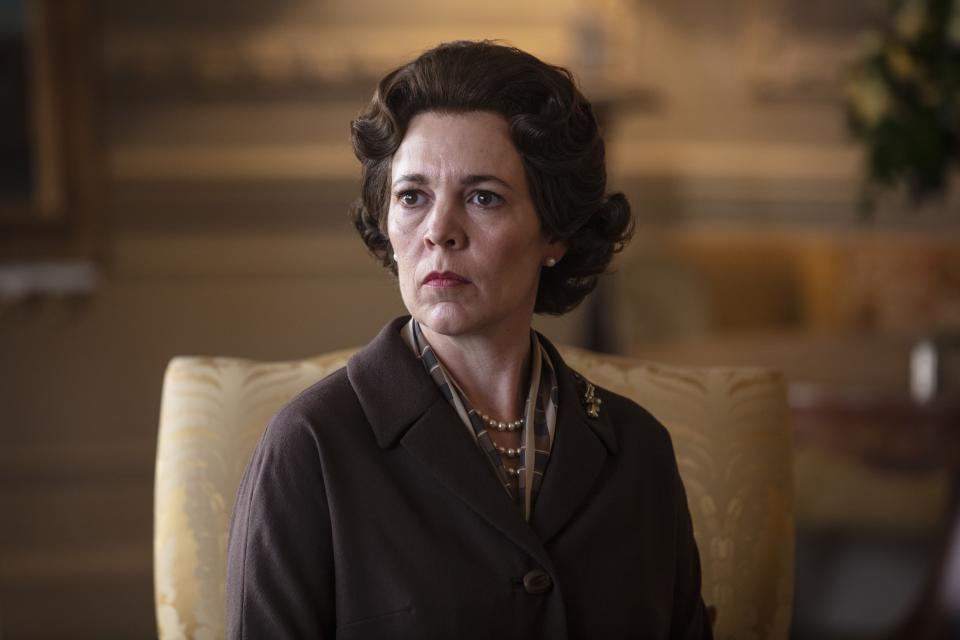
3
Sophie Mutevelian / NetflixShe says that Colman’s hair-and-makeup artist Sue David experimented with variations on a classic Italian roller set which was popular in the late 1950s/early 1960s. “At the beginning of the season in 1964, the wig is flickier with feathered ends, and as we move into the ’70s it becomes more solid and voluminous, with additional gray hair at the temples,” Halls says. “The queen’s hair now is recognizably still in the same roller set, so we felt it was really important to nail this iconic shape that would immediately tell the audience this is the queen. One of my favorite moments in season three is in episode one when Elizabeth comes into focus shot from behind and the wig is the star of the shot—it really could be her.”
The team sets the queen’s wigs on rollers and then “bakes” them before shaping. Colman had a total of six wigs, which were constantly being tweaked and replicated for continuity.
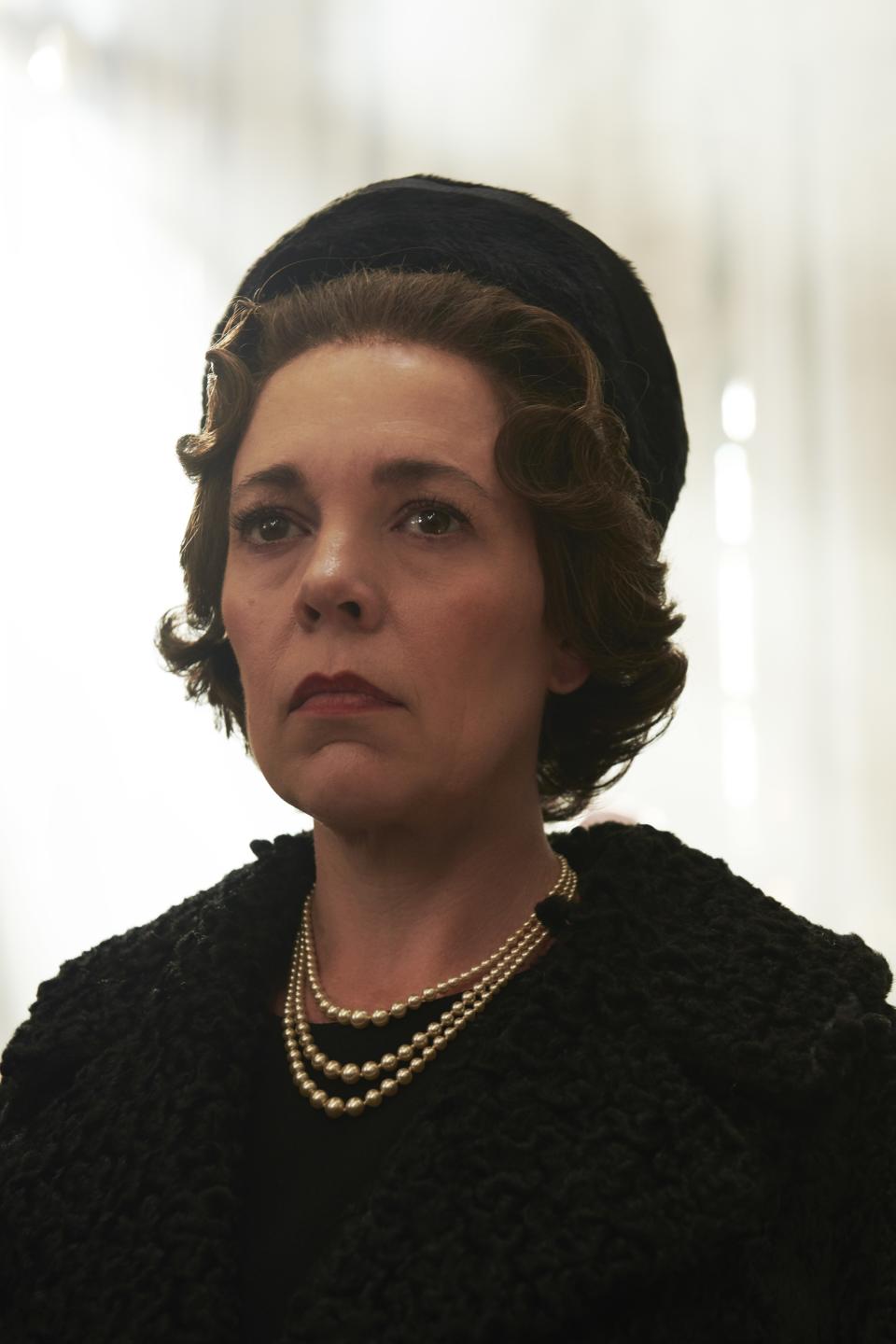
3
Des Willie / Netflix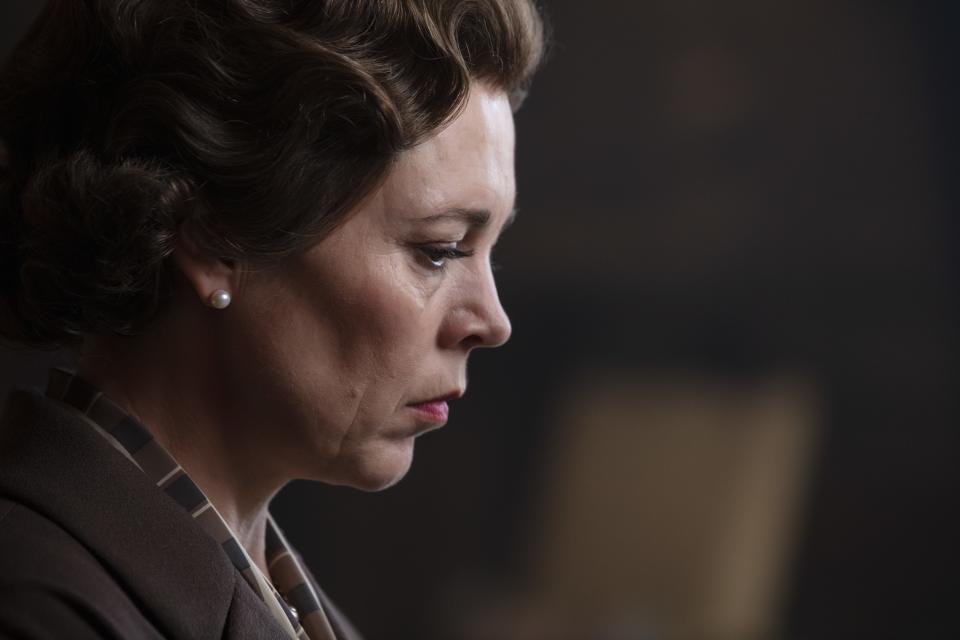
3
Sophie Mutevelian / NetflixPrincess Margaret (Helena Bonham Carter)
Hall actually got to meet with Princess Margaret’s actual hairdressers, who are in their 79s and still work out of their Mayfair salon. “They gave us a tiara application masterclass and were also able to lend us some of Margaret’s original hairpieces for reference,” she says. “The most incredible moment was when they brought out a lock of the princess’s hair they had kept and suddenly she was a real, concrete human being rather just a character in a script.”
The tension between Margaret and her older sister is a running theme in all three seasons of The Crown. Margaret often longs for a more meaningful role, while Elizabeth dreams a life free from the duty that defines her. Margaret’s more free spirit is often shown through her style. “Princess Margaret was such a joy to design, since unlike the rest of the royals, her look constantly changed and evolved in line with fashion,” Hall says. “She was a lover of the arts and music and wasn’t afraid of using hairpieces to drastically change her look from day to day. We used various techniques to create as wide a variety of styles as possible throughout the series to reflect the Princess’s flexibility and expressive character.”
For example, Bonham Carter’s hair-and-makeup artist Sarah Nuth applied a fringe piece in addition to her wig just for episode two because they knew, as we knew, Margaret had bangs for the 1965 American tour, but they discovered from her hairdressers that she hated it and grew them out as soon as possible.
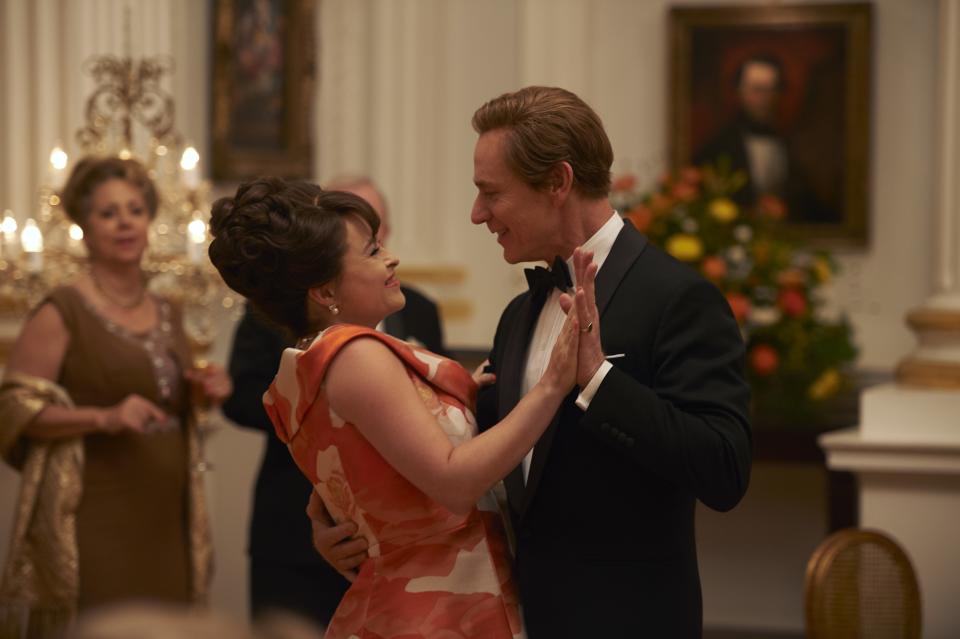
But the styling stayed true to Margaret’s signature shape that consisted of lots of height and volume around the hairline because the team “knew this was fundamentally important to Princess Margaret, who was always trying to increase her diminutive frame.” One of Hall’s favorite Margaret moments is during her birthday party in the final episode; Nuth created an enormous and dramatic style using a longer ladder wig, which Hall says helped heighten Margaret’s breakdown.
We get to see Margaret disheveled (both literally and figuratively) in ways that we never do with the queen. To create those messier looks, Hall’s team relied on Bumble and Bumble Thickening Dryspun Texturizing Spray “to help create the soft and flyaway texture in the sections of hair pulled away and gently back-combed around her hairline and nape.” Hall thinks Margaret is at her most beautiful in those moments because “there's something about how bare and fragile she is.”
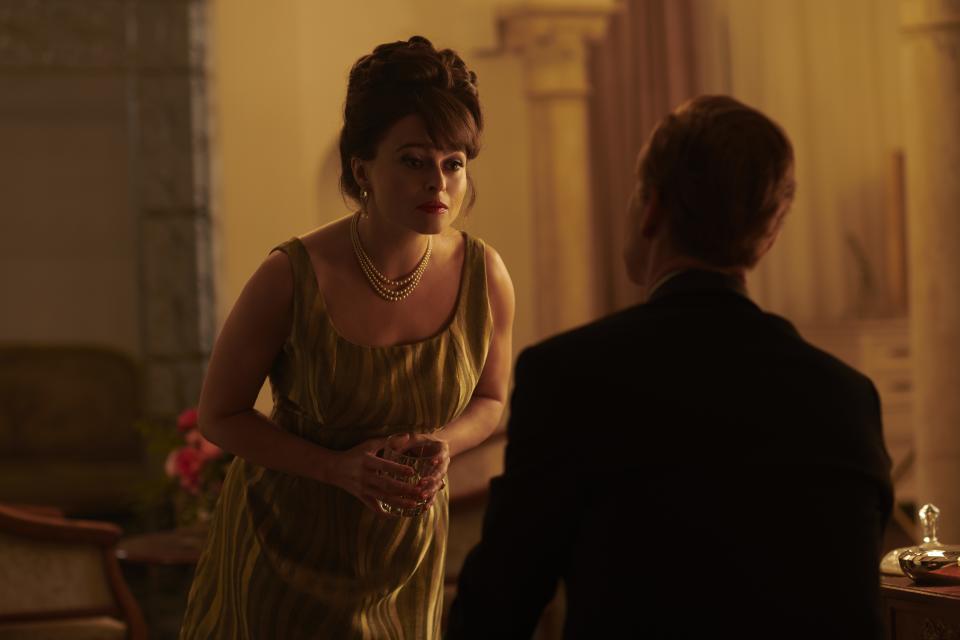
3
Des Willie / NetflixPrincess Anne (Erin Doherty)
Many current royal watchers may be familiar with Anne’s bouffant and stiff appearance as an older woman, but in viewing season three there appears to be a through-line to her hair as a young, outgoing teenager—and that was a purposeful decision. “We’re trying to tell a story our audience can relate to but that’s also faithful to the truth,” Hall says. “Like most of the royal family, Anne has a signature shape which originated with the fashion trend of volume at the crown in the 1960s and the reproduction of the Edwardian Gibson Girl style in the early 1970s. These two styles form the basis of Princess Anne’s hair throughout the season and represent a shape she has stuck to throughout her life. Although it seems stiff and controlled now, she had a huge amount of thick, textured hair which appeared far softer in the 1960s and 1970s.”
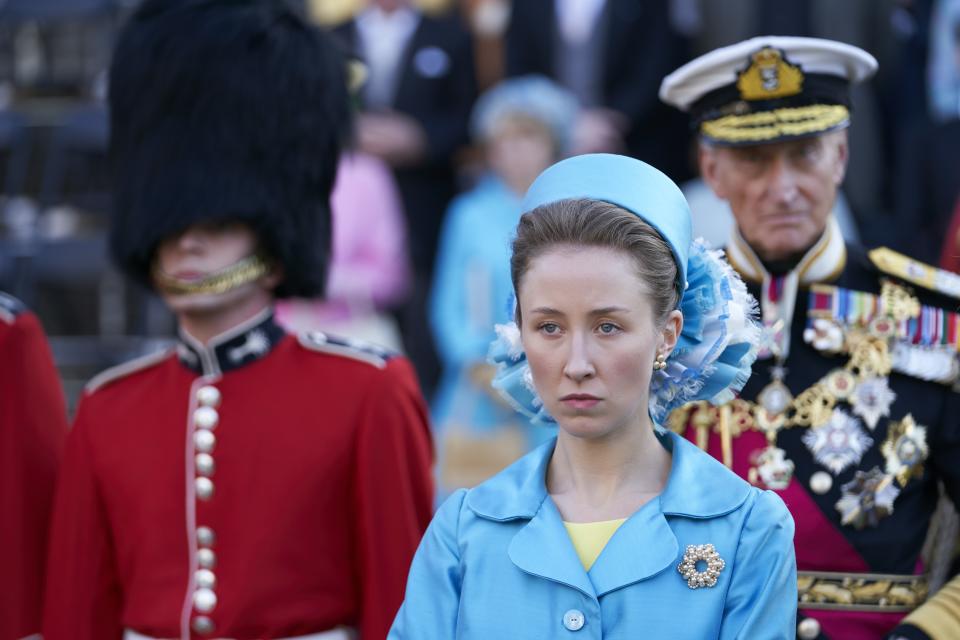
The-Crown-Princess-Anne-Erin-Doherty-Season-Three-2019-Blue-Suit.jpg
Des Willie / Netflix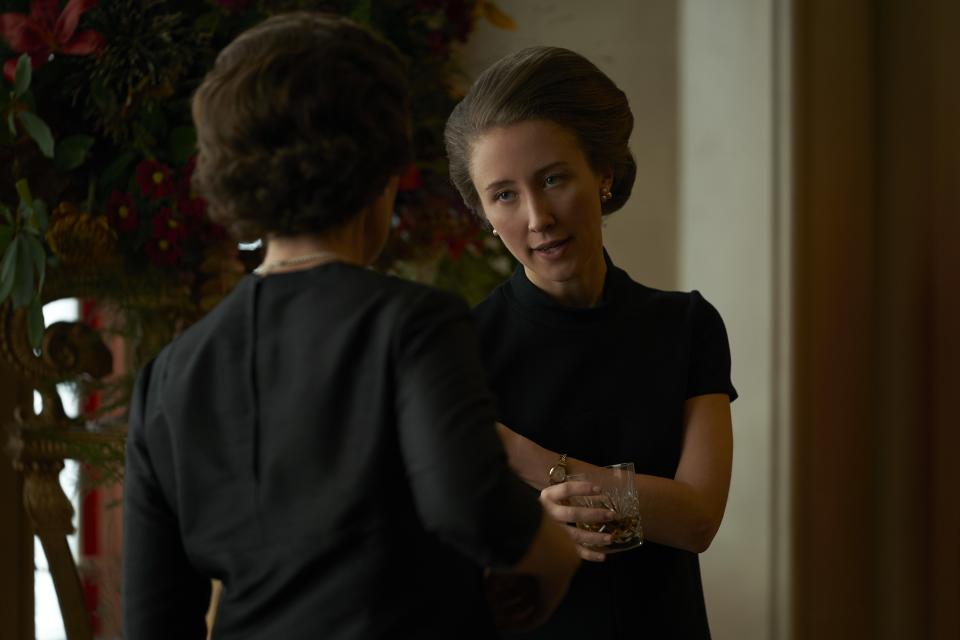
3
Des Willie / NetflixHall’s team said Doherty’s hair was already the perfect color and length to play the queen’s only daughter, but they needed more of it for volume and texture. They used a variety of hair pieces to thicken Doherty’s fine hair while also blowing it dry with mousse and setting it with hot rollers before back-combing the roots for added volume. All told, it would take about 90 minutes a day. Hall says she’d love to see a modern resurgence of these shapes and back-combed updos from the ’60s and ’70s.
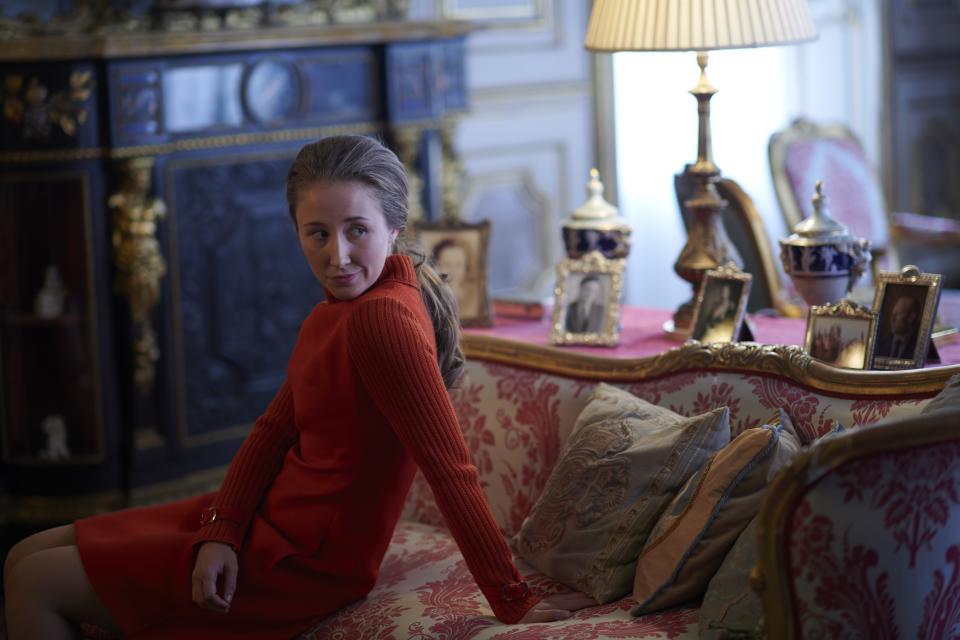
3
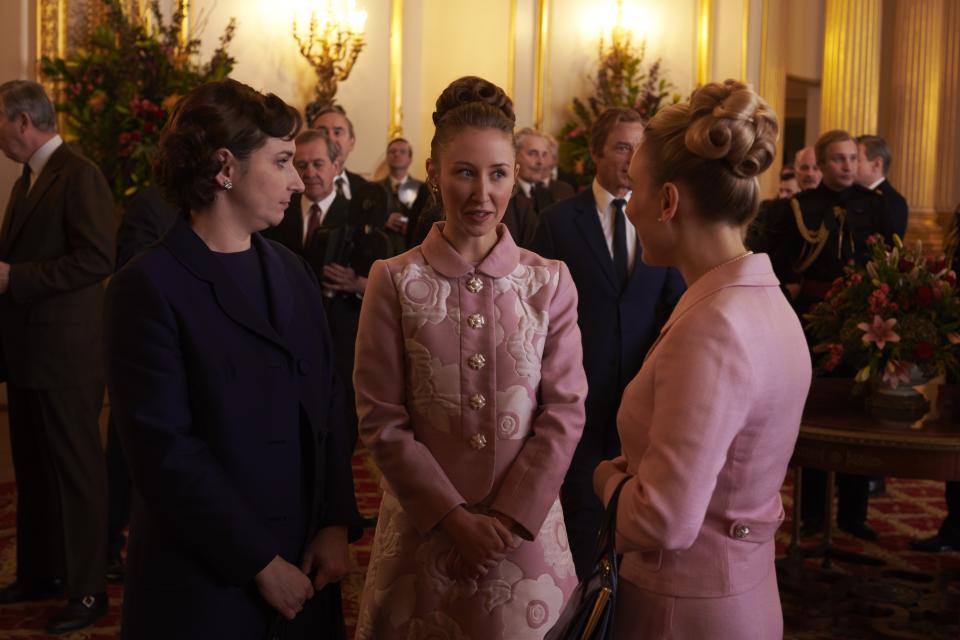
3
Des Willie / NetflixCamilla Shand (Emerald Fennell)
In season three, we first meet the woman who would become Prince Charles’s second wife and the current Duchess of Cornwall. She’s entangled in relationships with both the future king and Andrew Parker-Bowles, whom she would eventually marry before divorcing in 1995. “Camilla is another prime example of a woman who has kept the same shape hairstyle, albeit less extreme, since her 20s,” Hall says. “There aren’t that many pictures available of Camilla in the 1970s, but the ones we have show she clearly had a variation of the page-boy haircut, which was so popular at the time, where all the hair is dressed forward from the crown and layered down to behind the ear.” They used a wig since the cut is so specific but also dated, and they didn’t want to ask Fennell to keep it that way for the two years of shooting.
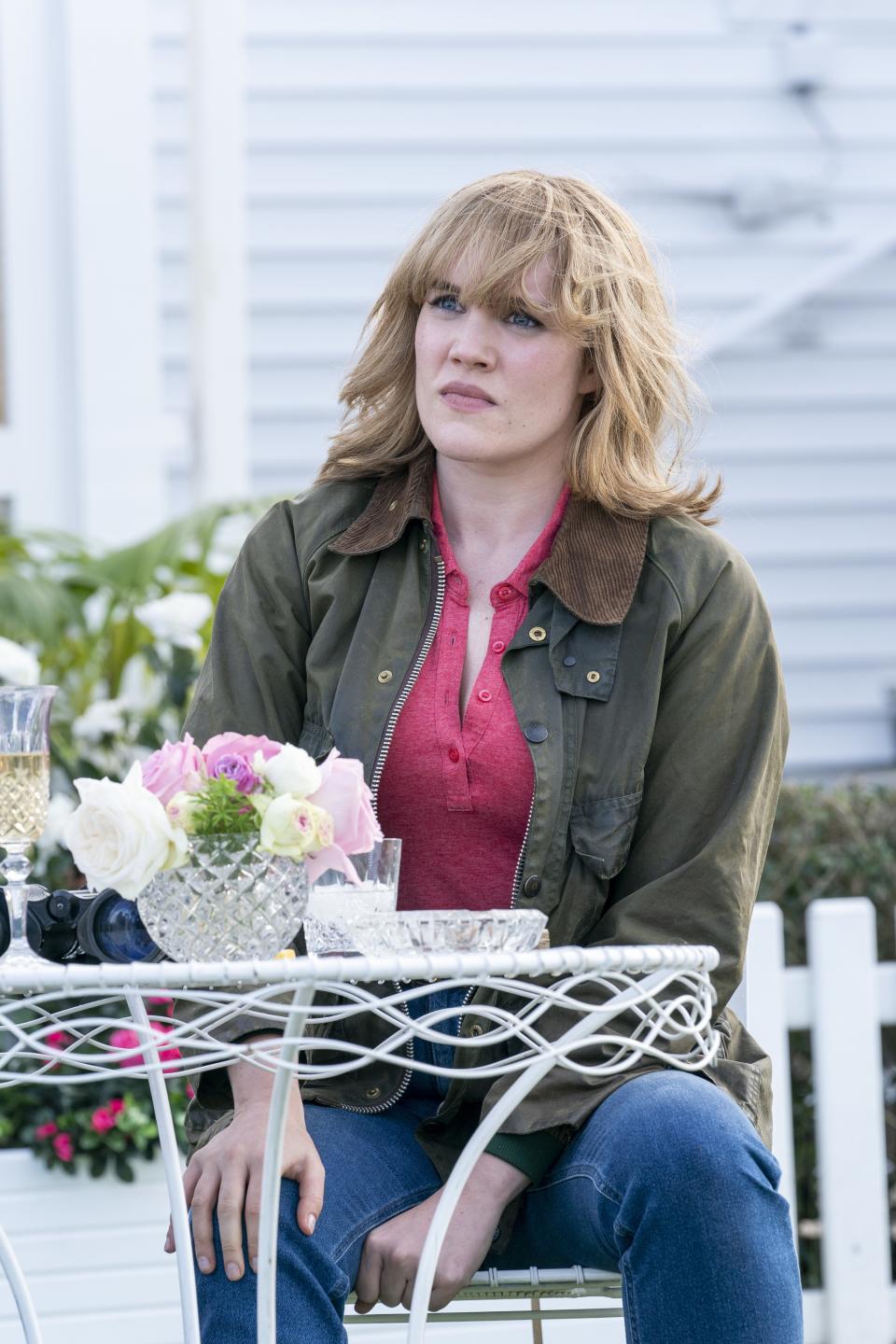
3
Colin Hutton / NetflixPrince Charles and Prince Philip (Josh O’Connor and Tobias Menzies)
Even the men on the show have very specific looks that are masterfully crafted. Hall says Prince Charles was the easiest, while Prince Philip was the most difficult transformation of the season. “Poor Tobias tolerated hair and makeup torture, because in order to really pull off the color transformation, his hair and makeup artist Cat Johnstone bleached his eyebrows for 45 minutes every three days,” she says. “This was super effective when he had his wig on, but made him look really peculiar for his everyday life since he has such dark hair.” The actor also sat through hours and hours of wig fittings so the team could create his hairpieces. For the first six episodes, he wore a toupée, but he transitioned to a full wig for the final four so they could add in some grays and texture at the temples to age him.
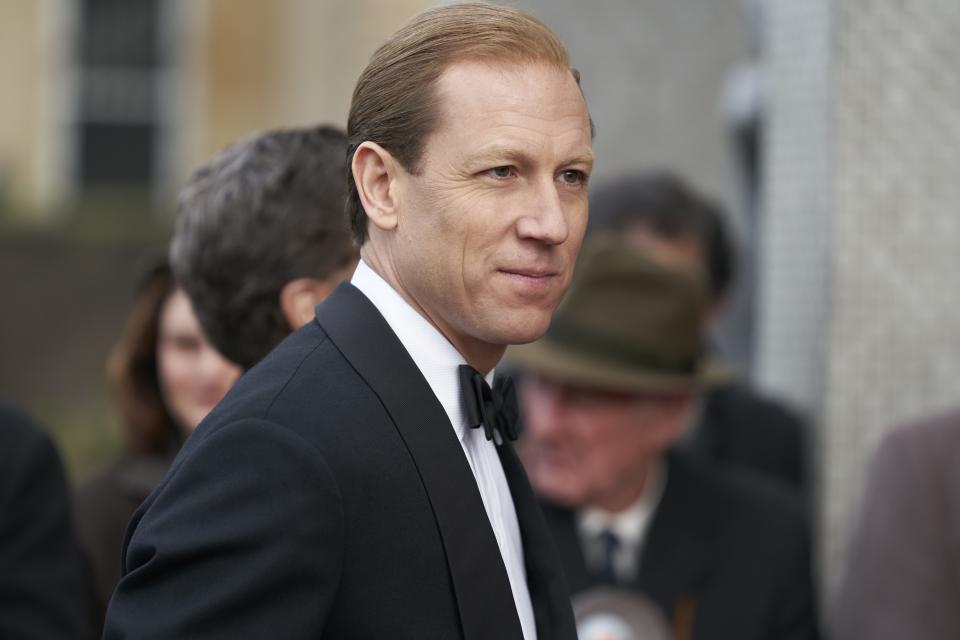
3
Des Willie / Netflix“Josh was easy—he has amazing malleable hair—which became perfectly Charles-like providing his parting was precise, well-regulated, and deep, all the way to the crown," Hall says. "His hair and makeup artists Tonia and Amy would use a tape measure to get it in the perfect place and to the perfect length. We actually loved Prince Charles’s hair through the 1970s—it was quite curly and sexy. We achieved this using Bumble and Bumble Surf Spray and diffusing Josh’s hair dry, but regardless of the texture, the parting remains.”
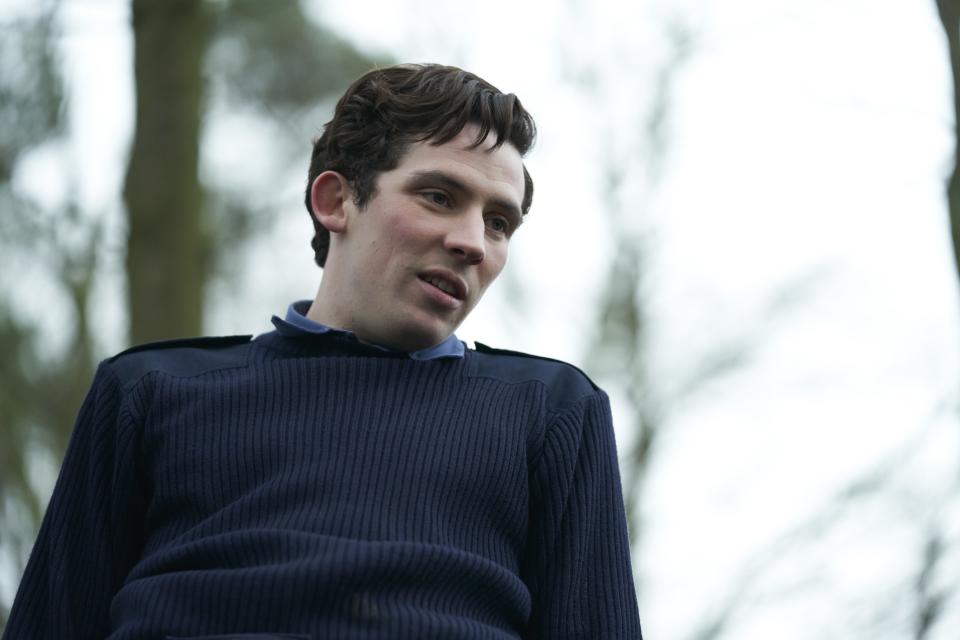
Prince Charles
Des Willie / NetflixThe Crown season three is currently streaming on Netflix.
Originally Appeared on Glamour

